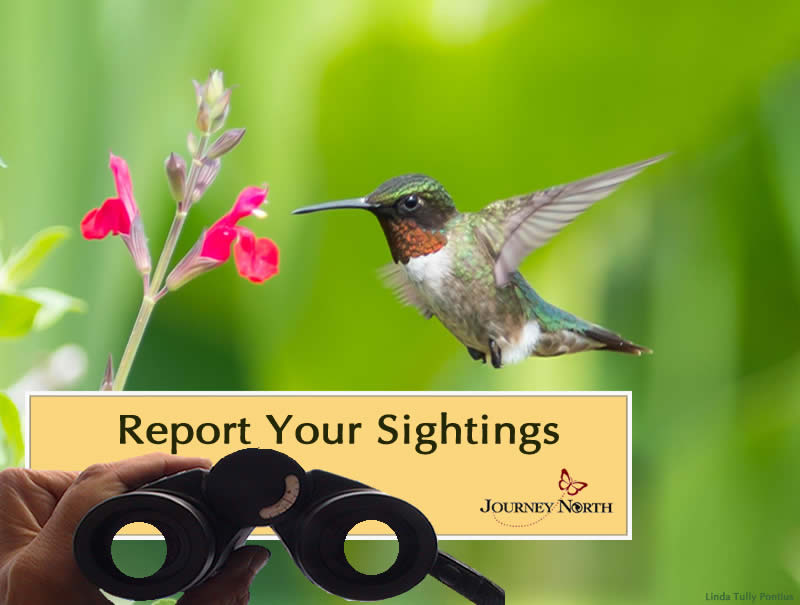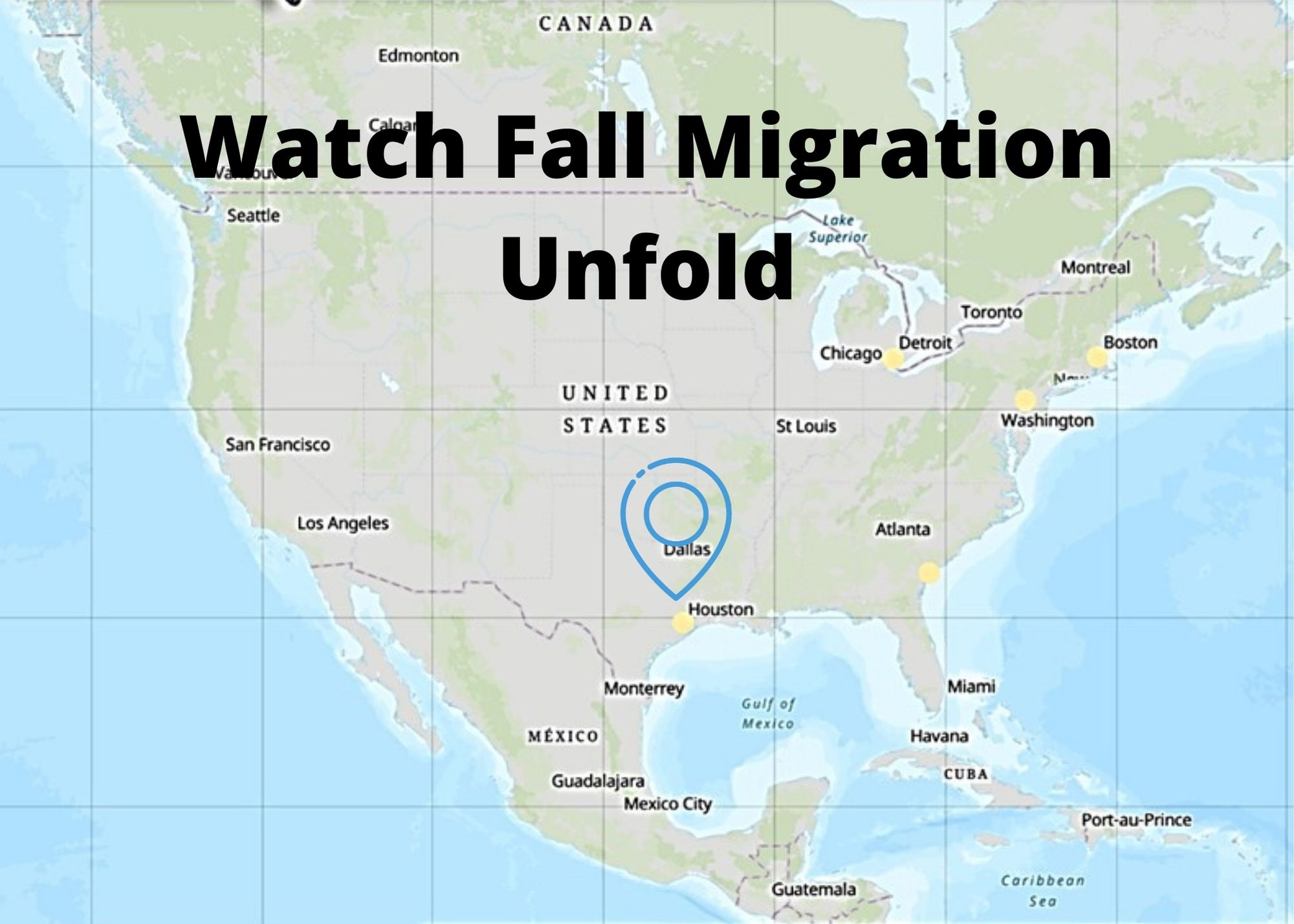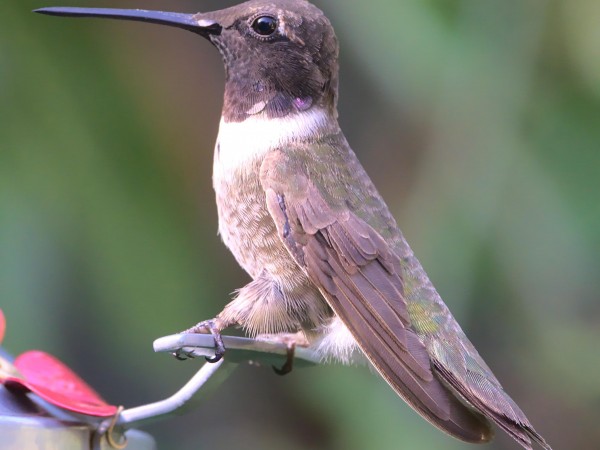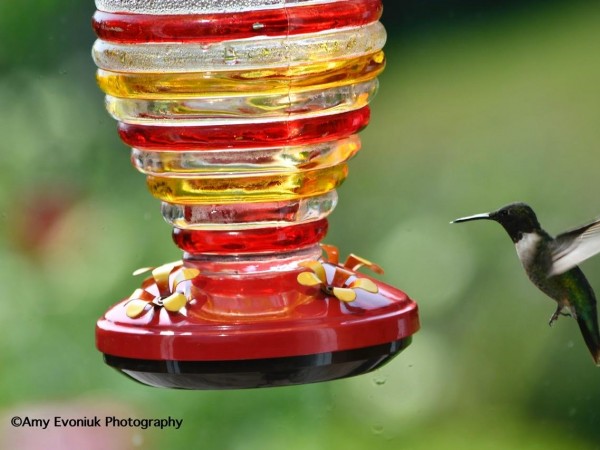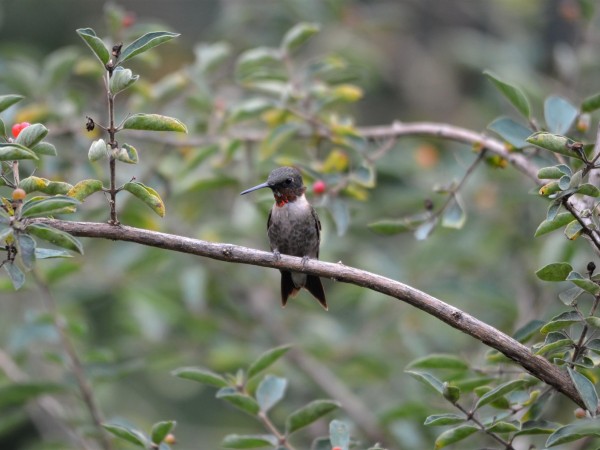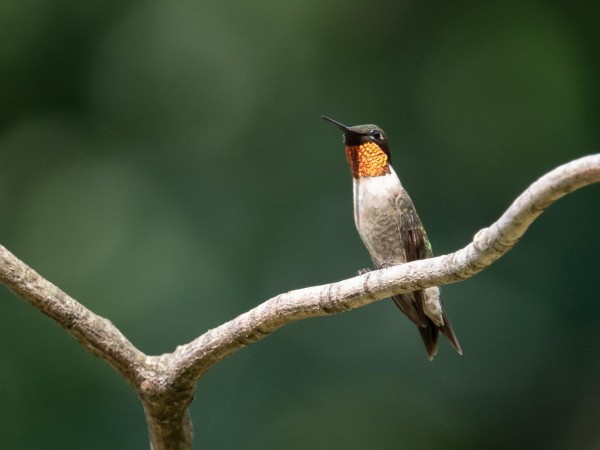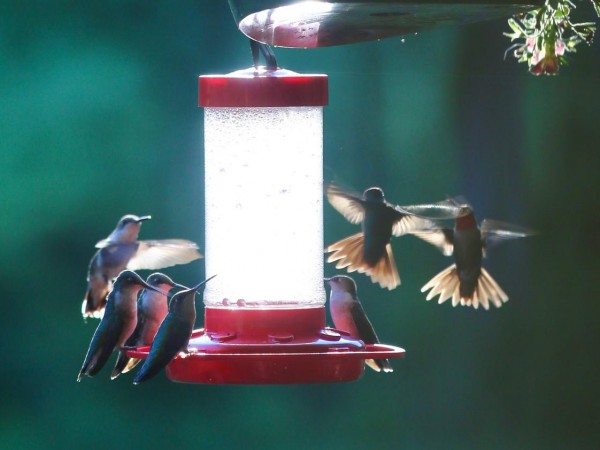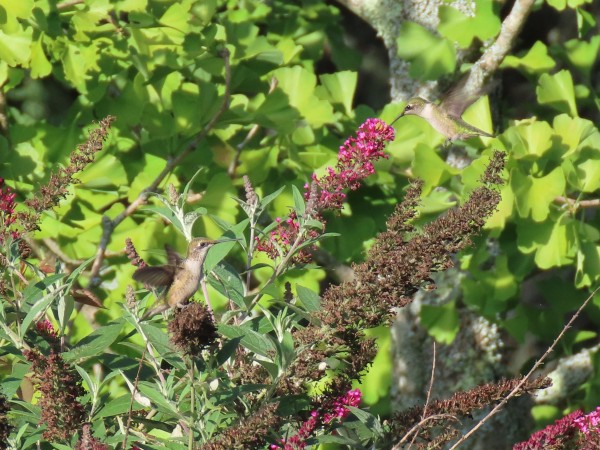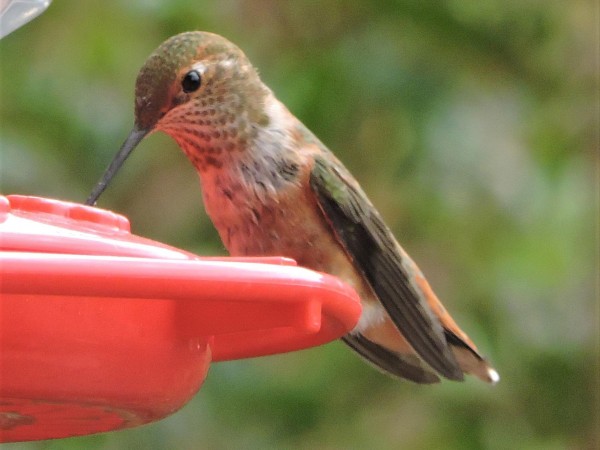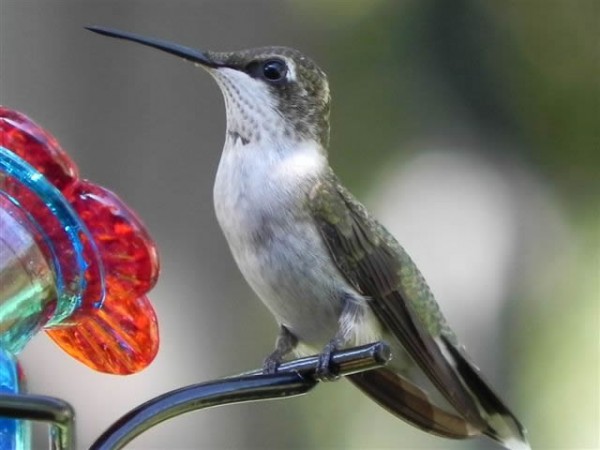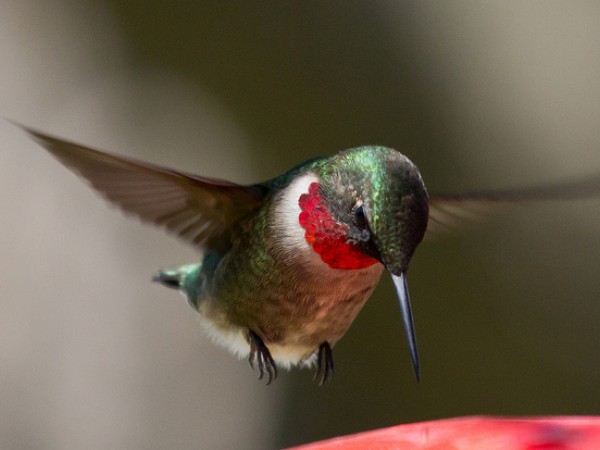Fueling up for the Big Trip
September is at the doorstep. Hummingbird fall migration is gaining momentum as more males head south and reports of feeding frenzies start to pick up.
Males on the Move
Male hummingbirds migrate first, followed by females and juveniles. Early male departure is actually beneficial to females and juveniles: with males gone, females and juveniles can feed without competing for food with the larger, more territorial males. This allows juveniles to prepare for migration. Newly-fledged birds need the time to mature and gain fat reserves before flying off on their first migration south.
You can report males under the category Hummingbird Sighting (Adult Male). We are hoping for more reports of adult males to better determine "last seen" dates. As fall migration progresses, these reports will drop-off.
Eric in Denton, TX: "I think it is a male Black-chinned Hummingbird. It has been at the feeder or perched in the area occasionally for the last few days." (08/23/2021)
Amy in Newburgh, IN: "Adult Ruby-throated male hovering near the feeder. There were 3 adults on my deck late this afternoon." (08/27/2021)
Bernice in Slocum Twp, PA: "I'm seeing at least 4 different adult male Ruby-throated Hummingbirds. This one seems to be molting. This male is trying to defend a few of the feeders I have out. He has his favorite spots to perch so he can keep an eye on "his" feeders. Most of the time he loses the battle, as soon as he starts chasing a hummingbird off another one sneaks in to get a drink!" (08/28/2021)
Marjorie in Lowell, MI: "This appears to be a different adult male Ruby-throated Hummingbird in our yard. We're thinking he might be a traveler. He's less afraid of humans and is well versed in guarding feeders." (08/28/2021)
Fueling up
In addition to male hummingbirds, Journey North citizen scientists are also noting a surge of feeding activity. Watch hummingbirds go on feeding frenzies before leaving breeding grounds. They will feed often and intensely for days in a state called hyperphagia. Hummingbirds start feeding as early as forty-five minutes before sunrise and keep eating until dusk. Fueled by the nectar, they double their weight as they prepare to fly hundreds or even thousands of miles.
Theresa in Alderson, WV: "I’m filling my two feeders three times a day. By this time of year I grow weary of the fillings, but they [hummingbirds] are such beautiful little jewels, visiting every flower and keeping everyone entertained." (08/24/2021)
Shannon in Sandia Park, NM: "Multiple species have been eating all the food in 7 feeders everyday for about 10 days. I’ve identified Broad-tails, Rufous, and Black-chinned. I even saw one Broad-billed." (08/24/2021)
Kathleen in Parksville, BC: "Female Rufous still feeding on nectar and feeders, will be heading south soon, going to miss them." (08/24/2021)
Connie in Hebbville, NS: "Two hummingbirds enjoying the butterfly bush today." (08/29/2021)
Claudia in Kenyon, MN: "Intense feeding at feeders, 8 cups nectar every 5 or 6 days from 3 feeders." (08/30/2021)
Carla in Ivins, UT: "First Rufous stopped at one of my feeders on his (her?) way south today." (08/31/2021)
Nectar Sources: Late Summer and Early Fall
While on migration, hummingbirds need a steady supply of food to fuel their flight. Finding nectar sources can mean the difference between life and death. Here are some steps you can take to help:
- Continue to maintain hummingbird feeders until temperatures consistently drop below freezing.
- Continue to nurture pollinator gardens. Next year, consider planting brightly-colored native flowers with long tube shapes. Remember hummingbirds are attracted to the bright colors, not smell. Follow this link for a few planting suggestions: Photo Gallery of Fall Nectar Sources.
- Support the preservation and restoration of native habitats that are favorable to both migratory and resident birds.
Report Your Observations
When you observe hummingbirds, we want to know. Species tracked include Ruby-throated, Rufous, Broad-tailed, Black-chinned, Allen's, Costa's, Calliope, and Anna's. Photos are always welcome and provide a voucher for your observation.
Here is a rundown of what to report during the fall migration season:
- Hummingbird Sighting (Adult Male)
- Hummingbird Sighting
- Hummingbird, Nectaring from Flowers
- Hummingbird (OTHER Observations)


